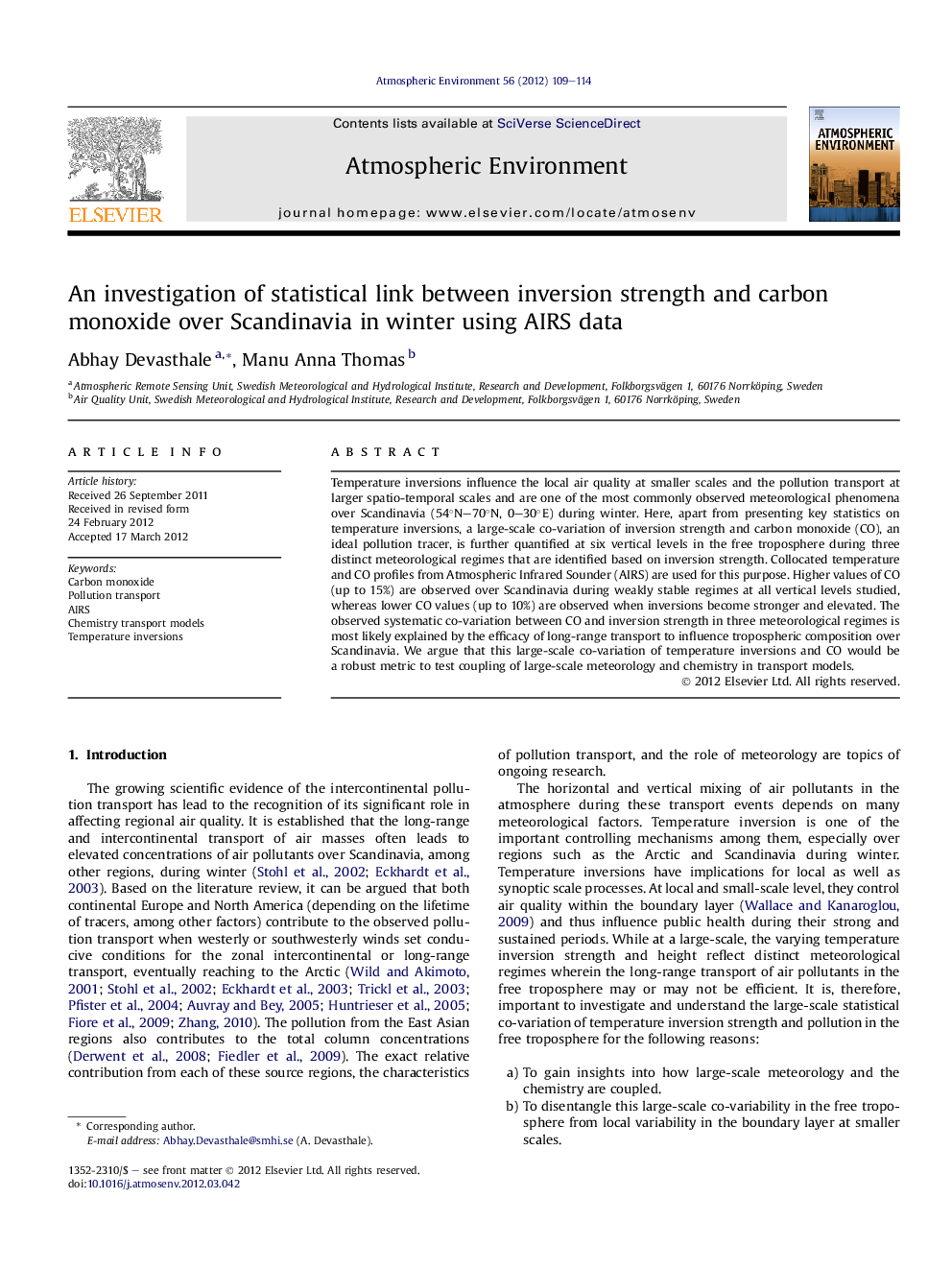| Article ID | Journal | Published Year | Pages | File Type |
|---|---|---|---|---|
| 4438721 | Atmospheric Environment | 2012 | 6 Pages |
Temperature inversions influence the local air quality at smaller scales and the pollution transport at larger spatio-temporal scales and are one of the most commonly observed meteorological phenomena over Scandinavia (54°N–70°N, 0–30°E) during winter. Here, apart from presenting key statistics on temperature inversions, a large-scale co-variation of inversion strength and carbon monoxide (CO), an ideal pollution tracer, is further quantified at six vertical levels in the free troposphere during three distinct meteorological regimes that are identified based on inversion strength. Collocated temperature and CO profiles from Atmospheric Infrared Sounder (AIRS) are used for this purpose. Higher values of CO (up to 15%) are observed over Scandinavia during weakly stable regimes at all vertical levels studied, whereas lower CO values (up to 10%) are observed when inversions become stronger and elevated. The observed systematic co-variation between CO and inversion strength in three meteorological regimes is most likely explained by the efficacy of long-range transport to influence tropospheric composition over Scandinavia. We argue that this large-scale co-variation of temperature inversions and CO would be a robust metric to test coupling of large-scale meteorology and chemistry in transport models.
► The key statistics on temperature inversions over Scandinavia is presented. ► The link between carbon monoxide and temperature inversions is investigated. ► Pollution transport signal based solely on satellite observations is inferred.
